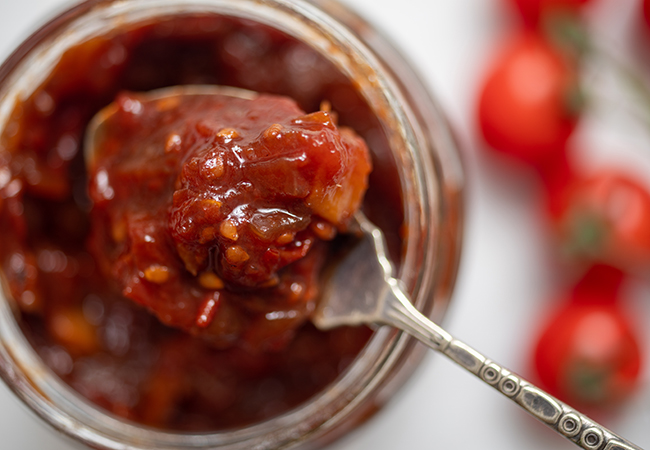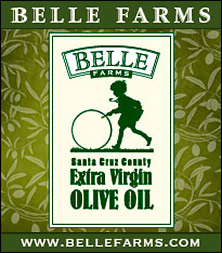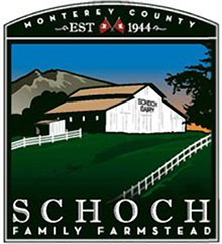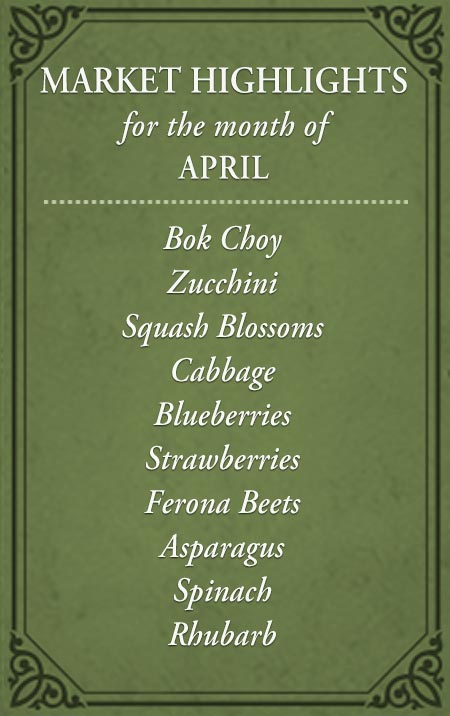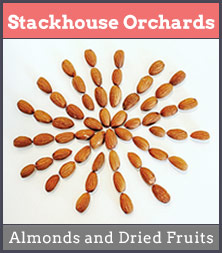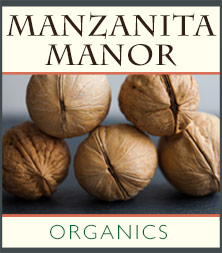Don’t be intimidated by the length of this recipe for tomato liquor—it’s actually a very simple process, just described in detail so you can get it right the first time.
I call this “liquor” because it’s almost a distillation of pure tomato flavor. It has countless uses: boosting pasta sauces or soups made with lackluster tomatoes, glazing vegetables when reduced to a syrup, or even standing in for tomatoes entirely in dishes. I once used it in a ratatouille-like recipe with early eggplant and summer squash, long before tomato season arrived.
Making tomato liquor also gives you the perfect opportunity to prepare Tomato Oil, a delicious way to capture roasted, smoky tomato flavor in a bottle. Drizzle it on salads, bread, seafood, or pasta—it’s a versatile pantry addition.
This recipe works best with at least 10–15 pounds of tomatoes. If you try with less than 5 pounds, the tomatoes will likely burn and the liquid evaporate before you can collect it. Ripe or even overripe tomatoes are perfect, especially a mix of varieties for depth of flavor. Always use a non-reactive pan that’s at least 3 inches deep to avoid spillage.
INGREDIENTS:
5 pounds (or more) ripe to over-ripe tomatoes (any kind; a mix is nice for flavor)
Optional: ½ liter or more extra-virgin olive oil (choose a mellow, not sharp, variety)
METHOD:
Roast the Tomatoes
Preheat oven to 450°F. Place cleaned tomatoes in a non-reactive roasting pan or Pyrex dish at least 3 inches deep. They can be close together, even stacked, but leave some room for air circulation. Poke each tomato once or twice with the tip of a knife or a fork, especially if the skins are tight. Roast until the tomatoes begin to release their liquid. If it’s happening too slowly, increase the heat slightly—but stay close to prevent burning.
Collect the Tomato Liquor
As liquid accumulates, carefully pour it off into a steel bowl or large glass measuring cup. (Place a baking sheet under your work area in case of spills.) A ladle also works well. Continue roasting and pouring off the liquid until the tomatoes give up all their juices.
At this stage, you can move directly to straining and reducing the Tomato Liquor or continue to make Tomato Oil with the remaining pulp.
Tomato Oil (Optional)
Return the drained tomatoes to the oven and roast until the pulp starts to color and release a roasted aroma.
Remove the pan from the oven, pour in at least ½ liter of olive oil, and reduce the oven heat to warm. Allow the oil to steep for about 2 hours. The oil should infuse gently—avoid bubbling.
Taste the oil. If the tomato flavor isn’t strong enough, steep for another hour.
Strain through a fine mesh sieve into a non-reactive container. Let settle overnight, then strain again through a cloth-lined sieve.
Store in a tightly capped bottle in the refrigerator, decanting into smaller bottles as the level drops to minimize oxidation.
Uses: Salad dressings, drizzled over grilled bread with arugula, on seafood, with seared halibut and cumin, or as a simple pasta sauce base.
Tomato Liquor
Strain the reserved tomato liquid through a fine mesh sieve into a non-reactive vessel. Strain again through a cloth, paper towel, or coffee filter for clarity. The liquor is now ready to use.
STORAGE:
Use fresh within 2 days (it spoils quickly). For longer storage, freeze in portions. It can also be reduced to a glaze, saving space and intensifying the flavor.
SUGGESTED USES:
- As a glaze for vegetables or proteins.
- To sweeten or balance a dish with acidity.
- In soups—either as a light chilled base with shrimp, basil, and sour cream, or in deeper broths with sautéed vegetables and herbs.
- As a sauce booster whenever a dish needs more tomato punch.
YIELD: Variable. Based on the quantity of tomatoes used and the liquid in the tomatoes.
SOURCE: Chef Andrew Cohen



